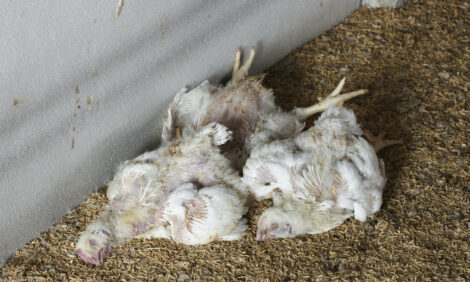



Mexico Manages Effects of Prolonged Drought
MEXICO - Rain during July and August, as well as government support, will be key to the livestock sector's output for the second half of 2011, according to the latest GAIN Report from the USDA Foreign Agricultural Service.Prolonged drought in Mexico has boosted slaughter and live exports for 2011 as the livestock sector seeks to avoid additional animal losses. Reduced availability of feed, fodder and higher grain prices (domestic and international) continue to pressure the livestock sector; thus, precipitation during July and August, as well as government support, will be key factors driving the sector's output for the second half of 2011.
Current situation
From January to March 2011, Mexican cattle exports to the United States surged 23 per cent compared to the same period last year.
Different sources have confirmed with FAS that live cattle exports during this quarter were driven by higher prices paid by US feedlots compared to Mexican feedlots. Additionally, a prolonged drought resulted in more exports of younger animals (330-400lbs) from northern states because of the attractive prices. However, unofficial data in USDA-Agricultural Marketing Service’s (AMS) weekly Market News report ‘Mexico Cattle to US’. Imports suggests that the flow of cattle to the United States tapered during June and July.
Even though no official data has been released, FAS estimates that Mexican cattle slaughter was approximately 1.5 per cent higher during the first five months of 2011 when compared to the same period in 2010, based on information provided by contacts and normal population growth.
The current concerns of the livestock sector, especially producers located in the northern states of Mexico, are a combination of:
- adverse effects of the February frost resulting in poor quality grasses at the beginning of the year,
- higher international grain prices, and
- a prolonged dry season damaging the remaining grasslands and grain crops.
The Mexican Government has publicly stated that rains are expected to resume later this year, though sufficient rains are expected and sowing for the upcoming grain crops is progressing at a good pace. Thus, there is no concern at this time about the future availability of domestic grain and pasture supplies.
Poultry and pork sectors
For the poultry sector, some private sources have expressed to FAS that broiler production will continue increasing. Thus, the consumption of grains – primarily sorghum – will maintain the current increasing trend. The poultry sector will principally obtain grains domestically but also from imports (despite high grain prices). In addition, some contacts have stated that the profit margin for broiler production continues to cover the increased costs of production attributable to grains. Moreover, producers use more price risk management tools for grain purchases.
On the other hand, the pork sector is facing consolidation due to the higher production costs as a result of higher grain prices. However, grain demand by large- and medium-sized producers seems to be covered mainly by domestic sorghum and wheat that is being diverted from the export channels and, when necessary, imported.
Consequently, the poultry and pork sectors are expected to continue increasing their demand for both domestic and international grains at any price.
Further Reading
| - | You can view the full report by clicking here. |









